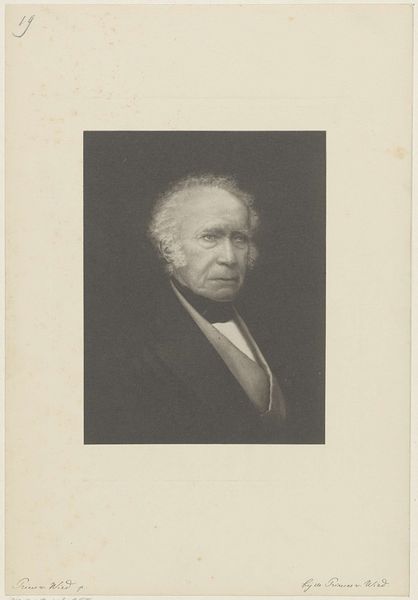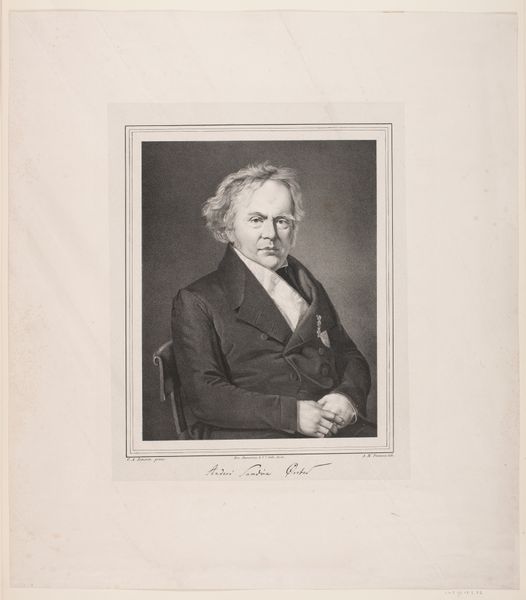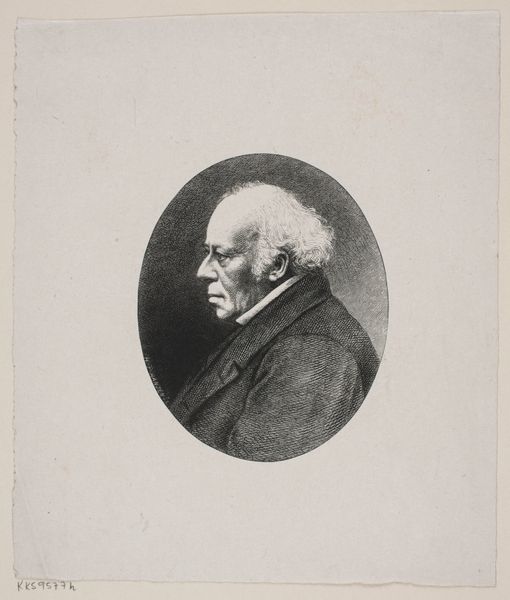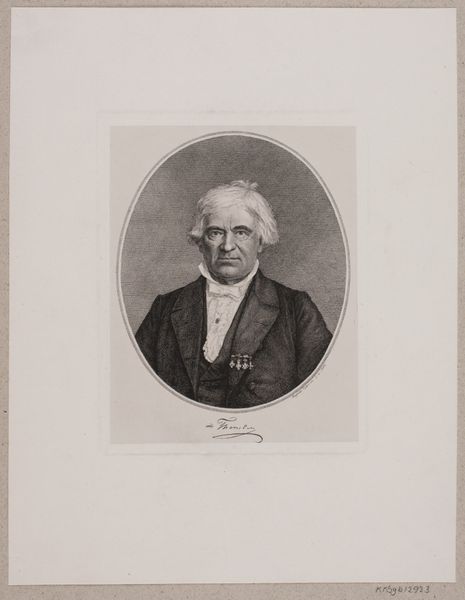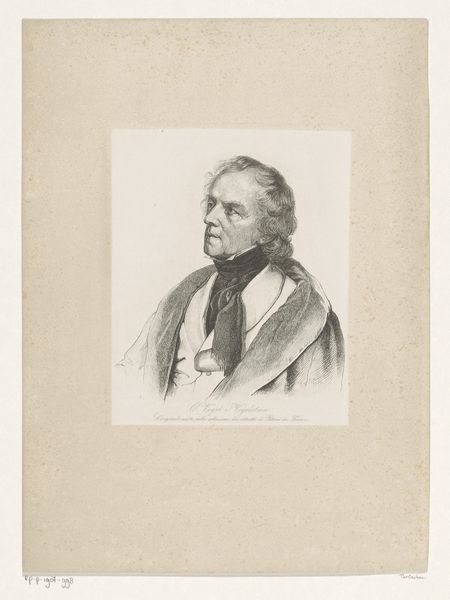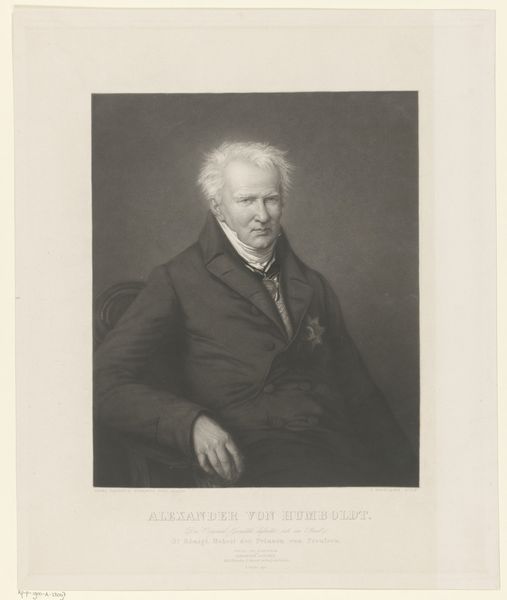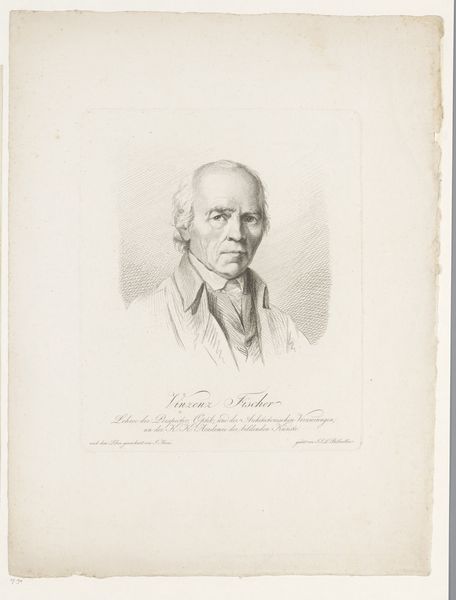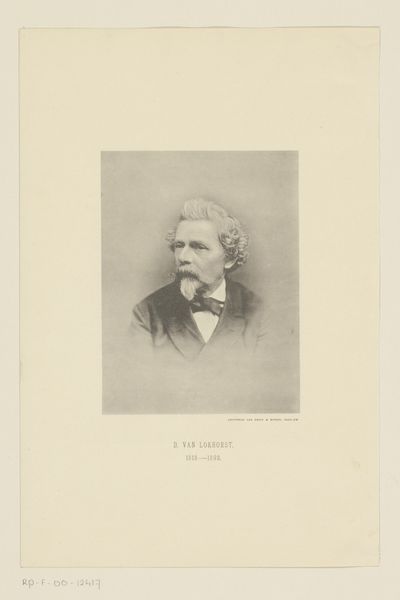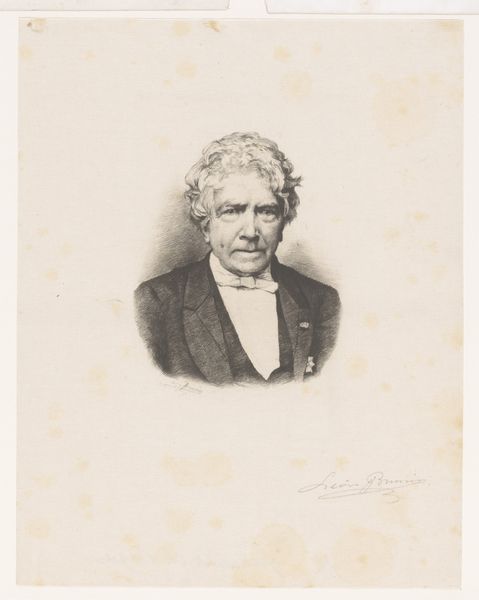
print, photography
#
portrait
# print
#
photography
#
historical photography
#
realism
Dimensions: height 565 mm, width 435 mm
Copyright: Rijks Museum: Open Domain
Curator: This is a print of Rogelio de Egusquiza’s "Portrait of Arthur Schopenhauer," created in 1890. Editor: The somber palette definitely mirrors the philosopher's outlook. You know, there's something profoundly unsettling yet compelling about the way he's portrayed. Curator: It's interesting that you key into the darkness. Printmaking in this era involved complex labor; the transfer of the image through photographic and chemical processes makes me think about the relationship between the original image and this representation, a copy available to a wider audience. Editor: Absolutely. Consider the social context: portraiture, traditionally for the elite, becomes democratized through print. It serves a crucial function, propagating Schopenhauer's image. His ideas about pessimism were gaining traction; who was consuming such portraits and why? Were they disciples? Curious onlookers? Curator: And the print itself has its own materiality. The paper's texture, the ink’s sheen – they’re all active participants. How does this affect the perception, the reception, of Schopenhauer's ideas, compared, say, to encountering him solely through textual works? Editor: That’s a good point, it prompts questions of authenticity and artistic interpretation. Photography provided what was seen as an objective likeness, but printmaking offered an intervention, a filter through the artist’s and the publisher’s intention. The proliferation of the image helped establish the cult of personality, imbuing artists and intellectuals with newfound celebrity. Curator: The craftsmanship of translating a photograph into a print – the choices of line, the degree of tonal range—becomes an act of interpretation, transforming an image into an artifact available on the open market, and transforming our access to this person's likeness and the complex means required to manufacture it. Editor: It's a fascinating example of how artistic reproduction mediates not only our encounter with an individual but with philosophical thought itself, reminding us that how something is consumed impacts what can be taken away from it. Curator: Yes, seeing Schopenhauer mediated by the materials and the economic realities of the era highlights the complexity of image dissemination. Editor: Indeed. The power of portraiture reshaped by mass production and accessible cultural appeal.
Comments
No comments
Be the first to comment and join the conversation on the ultimate creative platform.

